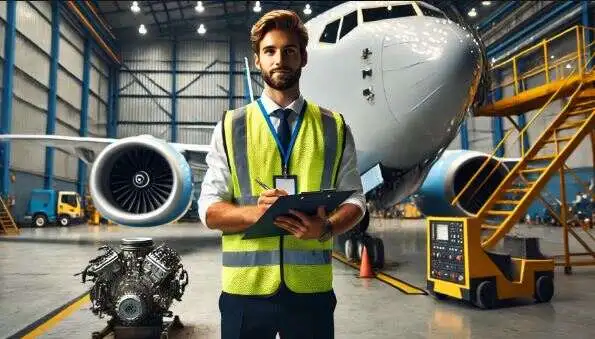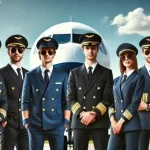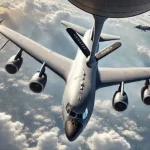The aviation industry offers a structured career path for those interested in aircraft maintenance. As an individual progress through their career, they can advance from entry-level positions to highly specialized and managerial roles. Technology update and world wide recognized skill make this career lucrative among tech enthusiast.
Below is an overview of the typical progression in the aircraft maintenance field, from entry-level to top-level positions, and the types of maintenance performed at each stage. Hope, you will get enough insights by the end of this article and for more information navigate to our other post. Now, lets get started!
1. Entry-Level: Line Maintenance Technician (Category A)
- Responsibilities: At the entry level, aircraft maintenance technicians typically start with line maintenance, which involves quick and straightforward tasks while the aircraft is in operation. For example-
- Troubleshooting issues and minor defects.
- Performing routine inspections, such as daily checks or turnaround inspections.
- Replacing simple components (e.g., lights, wheels, batteries).
- Carrying out basic repairs and adjustments that don’t require extensive disassembly.
- License:
- Category A (EASA) or A&P Certificate (FAA) is usually required.
- Basic level, focusing on familiarization with aircraft systems and parts.
- Skills: Basic technical knowledge, ability to work with tools, attention to detail, and problem-solving skills.
2. Mid-Level: Advanced Line Maintenance Technician (Category B1/B2)
- Responsibilities: With experience, technicians move into advanced line maintenance. They handle more complex tasks that require deeper knowledge of aircraft systems and components.
- More extensive troubleshooting and defect rectification.
- Component replacements requiring testing and calibration (e.g., engines, propellers, avionics).
- Inspections of mechanical and electrical systems in more detail.
- Ensuring compliance with aviation safety standards and regulations.
- License:
- Category B1 (Mechanical) or Category B2 (Avionics) (EASA) or additional A&P qualifications.
- A technician at this level may require type ratings for specific aircraft models.
- Skills: Advanced problem-solving, deep understanding of aircraft systems, and troubleshooting with specialized tools and equipment.
3. Experienced-Level: Base Maintenance Technician (Category B1/B2)
- Responsibilities: Technicians at the base maintenance level are responsible for more in-depth and complex tasks that cannot be carried out during normal operations. they normally perform the following type of work-
- Overhauls of engines, powerplants, and airframes.
- Structural inspections and repairs, including heavy maintenance checks.
- Deeper diagnostic work and testing for major malfunctions or wear.
- Tasks often involve significant disassembly and reassembly of aircraft parts.
- License:
- Category B1 or B2 for base maintenance (EASA) or an equivalent qualification.
- Type ratings may be necessary for specific aircraft models or systems.
- Skills: Expert technical knowledge of aircraft structures, systems, and powerplants; experience with heavy maintenance procedures; and the ability to manage more complex tasks that require in-depth analysis and troubleshooting.
4. Senior-Level: Lead Maintenance Engineer / Supervisor
- Responsibilities: At this stage, technicians move into a supervisory or leadership role. They manage maintenance operations, lead teams, and ensure that tasks are completed on time and in compliance with safety regulations.
- Overseeing both line and base maintenance activities.
- Managing a team of technicians, providing guidance, training, and ensuring workflow efficiency.
- Ensuring compliance with safety and regulatory standards during all stages of maintenance.
- Collaborating with other departments (e.g., quality control, operations).
- License:
- Higher-level qualifications in Category B1/B2 and experience in aircraft maintenance.
- Lead or Supervisor-level certifications (EASA/FAA).
- Management and leadership training can be an asset.
- Skills: Strong leadership, management, and communication skills, along with technical expertise in aircraft systems and maintenance procedures.
5. Top-Level: Chief Maintenance Engineer / Manager
- Responsibilities: The Chief Maintenance Engineer or Maintenance Manager is the highest-level position in the aircraft maintenance career path. These professionals oversee the entire maintenance department, ensuring that all maintenance tasks align with safety regulations and operational requirements.
- Managing maintenance teams, resources, and budgets.
- Ensuring the safety and airworthiness of the entire fleet.
- Handling scheduling and planning of major overhauls, inspections, and repairs.
- Coordinating with other departments, including flight operations and engineering.
- Maintaining relationships with regulatory bodies (e.g., FAA, EASA) and ensuring compliance.
- License:
- Senior-level qualifications in Category C or Leadership certifications.
- Significant experience in both line and base maintenance, along with higher-level management training.
- Skills: Exceptional leadership, project management, and strategic planning skills. In-depth understanding of aircraft maintenance, safety standards, and operational efficiency.
Career Path Overview
| Level | Position | Maintenance Type | License Required | Responsibilities |
| Entry-Level | Line Maintenance Technician | Line Maintenance | Category A / A&P Certificate (FAA) | Basic troubleshooting, inspections, and minor repairs. |
| Mid-Level | Advanced Line Maintenance Technician | Advanced Line Maintenance | Category B1/B2, Type Ratings (as required) | Troubleshooting, component replacement, minor overhauls. |
| Experienced-Level | Base Maintenance Technician | Base Maintenance | Category B1/B2, Type Ratings, Further Specialization | Heavy inspections, overhauls, and major repairs. |
| Senior-Level | Lead Maintenance Engineer / Supervisor | Line & Base Maintenance | Category B1/B2, Leadership Qualifications | Supervising teams, planning, ensuring compliance. |
| Top-Level | Chief Maintenance Engineer / Manager | Line & Base Maintenance | Category C, Advanced Management Training | Overseeing all maintenance operations, strategic management. |
Conclusion
The career path in aircraft maintenance is structured, with opportunities for growth from entry-level positions to top-level management roles. Starting with line maintenance, technicians can progress through advanced line and base maintenance roles, eventually moving into leadership and management positions.
Each stage in the career path requires progressively higher levels of expertise, responsibility, and qualifications, including specialized licenses and type ratings. As technicians gain experience, they can move into supervisory and managerial roles, overseeing the safety and efficiency of aircraft maintenance operations.



